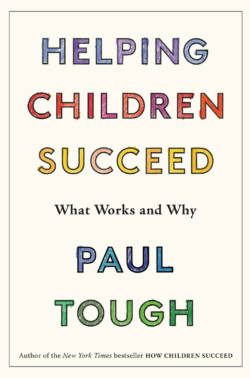By Paul Tough
Because noncognitive qualities like grit, curiosity, self-control, optimism, and conscientiousness are often described, with some accuracy, as skills, educators eager to develop these qualities in their students quite naturally tend to treat them like the skills that we already know how to teach: reading, calculating, analyzing, and so on. And as the value of noncognitive skills has become more widely acknowledged, demand has grown for a curriculum or a textbook or a teaching strategy to guide us in helping students develop these skills. If we can all agree on the most effective way to teach the Pythagorean theorem, can’t we also agree on the best way to teach grit? In practice, though, it hasn’t been so simple. Some schools have developed comprehensive approaches to teaching character strengths, and in classrooms across the country, teachers are talking to their students more than ever about qualities like grit and perseverance. But in my reporting for How Children Succeed, I noticed a strange paradox: Many of the educators I encountered who seemed best able to engender noncognitive abilities in their students never said a word about these skills in the classroom.
Take Elizabeth Spiegel, the chess instructor I profiled at length in How Children Succeed. She teaches chess at Intermediate School 318, a traditional, non-magnet public school in Brooklyn that enrolls mostly low-income students of color. As I described in the book, she turned the I.S. 318 chess team into a competitive powerhouse, one that regularly beats better-funded private school teams and wins national championships. It was clear to me, watching her work, that she was teaching her students something more than chess knowledge; she was also conveying to them a sense of belonging and self-confidence and purpose. And among the skills her students were mastering were many that looked exactly like what other educators called character: the students persisted at difficult tasks, overcoming great obstacles; they handled frustration and loss and failure with aplomb and resilience; they devoted themselves to long-term goals that often seemed impossibly distant.
And yet, in all the time I spent watching her teach, I never once heard Elizabeth Spiegel use words like grit or character or self-control. She talked to her students only about chess. She didn’t even really give them pep talks or motivational speeches. Instead, her main pedagogical technique was to intensely analyze their games with them, talking frankly and in detail about the mistakes they had made, helping them see what they could have done differently. Something in her careful and close attention to her students’ work changed not only their chess ability but also their approach to life.
Or take Lanita Reed. She was one of the best teachers of character I met — yet not only did she not talk much about character, she wasn’t even a teacher. She was a hairdresser who owned her own salon, called Gifted Hanz, on the South Side of Chicago, and she worked part-time as a mentor for a group called Youth Advocate Programs, which had been hired by the Chicago schools department to provide intensive mentoring services to students who had been identified as being most at risk of committing or being a victim of gun violence. When I met Reed, she was working with a 17-year-old girl named Keitha Jones, whose childhood had been extremely difficult and painful and who expressed her frustration and anger by starting a fistfight, nearly every morning, with the first student at her high school who looked at her the wrong way.




 Rather than consider noncognitive capacities as skills to be taught, I came to conclude, it’s more accurate and useful to look at them as products of a child’s environment. There is certainly strong evidence that this is true in early childhood; we have in recent years learned a great deal about the effects that adverse environments have on children’s early development. And there is growing evidence that even in middle and high school, children’s noncognitive capacities are primarily a reflection of the environments in which they are embedded, including, centrally, their school environment.
Rather than consider noncognitive capacities as skills to be taught, I came to conclude, it’s more accurate and useful to look at them as products of a child’s environment. There is certainly strong evidence that this is true in early childhood; we have in recent years learned a great deal about the effects that adverse environments have on children’s early development. And there is growing evidence that even in middle and high school, children’s noncognitive capacities are primarily a reflection of the environments in which they are embedded, including, centrally, their school environment.